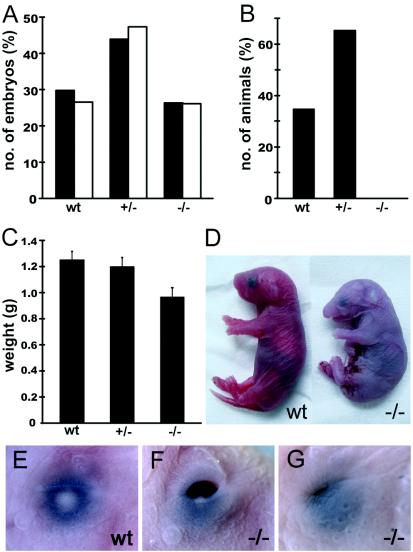FIG. 3.
Distribution of genotypes and birth weights in Sox11-deficient embryos and control littermates. (A) Embryos isolated between 8.5 and 15.5 dpc (filled bars [n = 262]) and between 16.5 and 18.5 dpc (open bars [n = 222]) were grouped according to genotype as wild-type (wt), heterozygous (+/−), or Sox11-deficient (−/−). The relative contribution of each genotype is indicated. (B) Relative genotype distribution of 3-week-old mice (n = 98). (C) Body weights were determined (in grams) for embryos at 18.5 dpc after delivery by caesarean section (17 wild-type embryos, 31 heterozygous embryos, and 25 Sox11-deficient embryos). The mean body weight (± standard error of the mean [SEM]) is presented for each genotype. (D) Gross morphology of embryos at 18.5 dpc after delivery by caesarean section. Note the smaller size, facial malformations, and cyanotic appearance of the Sox11-deficient embryo. (E to G) Eyelid closure defects in Sox11-deficient mice (F and G) compared to a control littermate (E) at 18.5 dpc.

